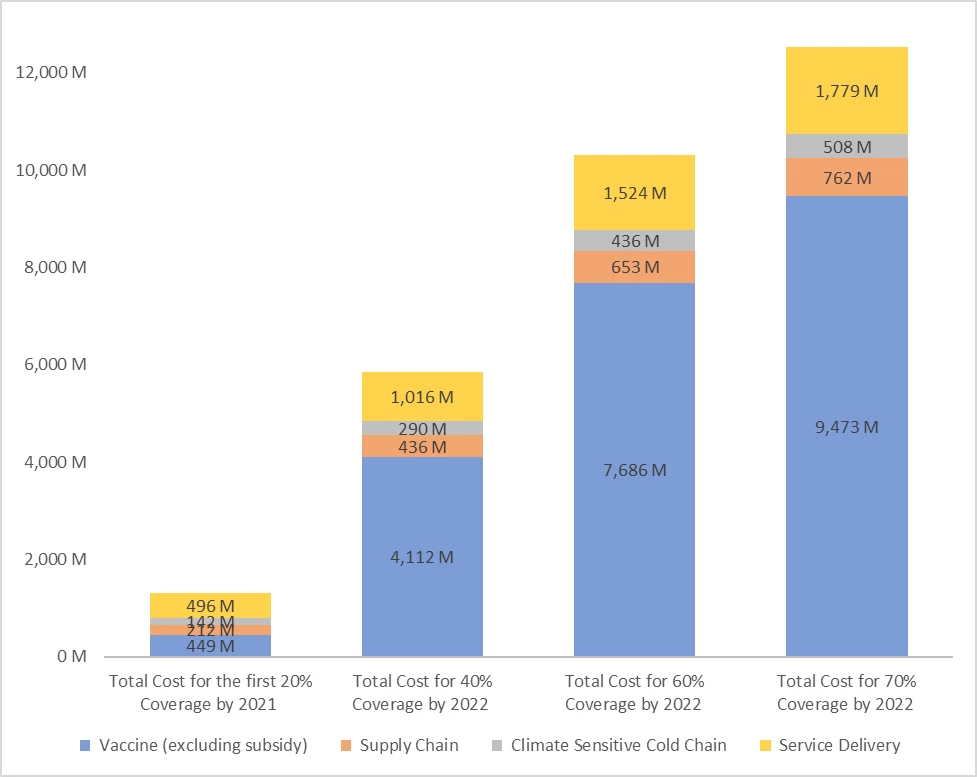
This is a group that is in a transition period from childhood to adulthood. Since this period (ages 15-24) affects adulthood more directly than childhood, youth-related data can provide insights into how we can better address their future opportunities and challenges.
"The potential possibilities of any child are the most intriguing and stimulating in all creation."
– Ray Wilbur, American educator
Where are the highest concentrations of young people?
In 2013, people who were born between 1989 and 1998 accounted for 17% of the world's total population – 1.2 billion. While the world's population continues to grow, the youth population has declined gradually after it peaked in 2010. The youth population in high-income countries decreased by 6 million between 2010 and 2013, a reflection of the aging population trend in this income group.
Source: World Bank staff estimates using the World Bank's population and age distributions of the United Nations Population Division's World Population Prospects. databank.worldbank.org/data/Youth-population/id/8633f780
In low- and middle-income countries, three regions have seen their youth population decline: East Asia and Pacific, Europe and Central Asia, and Middle East and North Africa. The East Asia and Pacific region recorded the largest decline, most notably in China, where the youth population decreased by 30 million people, equal to the entire population of Malaysia in 2013.
On the other hand, the rise of the youth population in Latin America and the Caribbean, South Asia, and Sub-Saharan Africa, contributed to the slight increase in the share of the youth population overall. Today, 87% of young people live in developing countries.
Most literate generation ever
Nearly 90% of young people in the developing world had acquired basic literacy by 2012. But the level and speed of this achievement vary across regions and by gender. The East Asia and the Pacific, as well as the Europe and Central Asia regions both reached nearly 100% youth literacy rates a decade ago, while the Sub-Saharan African youth literacy rate remains at about 70%.
Source: UNESCO Institute for Statistics and World Development Indicators databank.worldbank.org/data/Literacy/id/c916694d
 South Asia had the lowest female literacy rates in 1990, yet with increased access to education, this region's climbing literacy rates have surpassed Sub-Saharan Africa's female literacy rates. The Middle East and North African regions also saw significant progress in narrowing the gender gap in literacy rates. Progress, indeed, has been made in Sub-Saharan Africa but at a slower pace, due to varying regional trends. For example, female youth literacy rates increased from 9% in 1993 to 44% in 2012 in Chad, while the rates dropped from 54% in 1994 to 37% in 2007 in Liberia. Additionally, gender gaps narrowed in Chad, yet widened in Liberia.
South Asia had the lowest female literacy rates in 1990, yet with increased access to education, this region's climbing literacy rates have surpassed Sub-Saharan Africa's female literacy rates. The Middle East and North African regions also saw significant progress in narrowing the gender gap in literacy rates. Progress, indeed, has been made in Sub-Saharan Africa but at a slower pace, due to varying regional trends. For example, female youth literacy rates increased from 9% in 1993 to 44% in 2012 in Chad, while the rates dropped from 54% in 1994 to 37% in 2007 in Liberia. Additionally, gender gaps narrowed in Chad, yet widened in Liberia.
Looking at youth unemployment rates
While literacy is key to helping young people prepare for the job market, they often still have difficulties in finding a job. However, it's important to point out here that a high unemployment rate isn't necessarily a negative sign. People may take their time to secure a preferable job when social protection benefits are available. Additionally, high youth unemployment rates can sometimes be explained by their more frequent back and forth from being employed to attending school.
Source: International Labor Organization and World Development Indicators databank.worldbank.org/data/Unemployment/id/b99a0119
Female youth in the Middle East and North Africa remain the most disadvantaged group: 45% were unemployed in 2012, which is more than quadruple the adult male unemployment rate. The lowest rates of youth unemployment have remained in South Asia and the East Asia and Pacific regions since the 1990s. East Asia and the Pacific is the only region where female unemployment rates have been lower than male rates for both young and adult populations.
For more information on youth unemployment rates, please read our recent blog post, Where in the world are young people out of work?
Data Limitations
Literacy estimates from the United Nations Educational, Scientific and Cultural Organization (UNESCO)'s Institute for Statistics (UIS) are based on different types of data, including self-declaration data and standardized tests, in addition to variables such as lengths of school attendance and levels of completion in few cases. Unemployment data from the International Labor Organization (ILO) can be underestimated because the data do not count people who are not actively seeking a job. Also, young people may give up on their job search when they see little opportunity in the labor market. Women are especially disadvantaged because they are often responsible for household tasks and work part-time or in temporary jobs instead of looking for more secure employment. Still, these figures can provide a good assessment of where the challenges lie for young people around the world.
In a Tweet on World Youth Day (August 12), the United Nations Population Fund Ghana representative Babatunde Ahonsi encouraged the Twitterverse to, "Ensure that young people voices and priorities are incorporated in the national development plans."
And looking at youth data, indeed, is one step we can take to inform ourselves.
Please consider following us on Twitter at @worldbankdata for news and updates on the most widely followed measures of the global economy and our Open Data initiative.
Indicators and codes used in this post:
- Population (Total) SP.POP.TOTL
- Female population 15-19 SP.POP.1519.FE
- Male population 15-19 SP.POP.1519.MA
- Female population 20-24 SP.POP.2024.FE
- Male population 20-24 SP.POP.2024.MA
- Literacy rate, youth female (% of females ages 15-24) SE.ADT.1524.LT.FE.ZS
- Literacy rate, youth male (% of males ages 15-24) SE.ADT.1524.LT.MA.ZS
- Unemployment, youth female (% of female labor force ages 15-24) SL.UEM.1524.FE.ZS
- Unemployment, youth male (% of male labor force ages 15-24) SL.UEM.1524.MA.ZS
Related links:


Join the Conversation